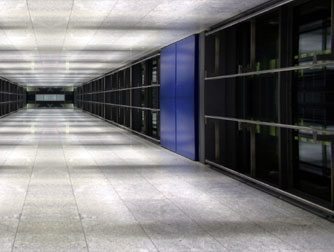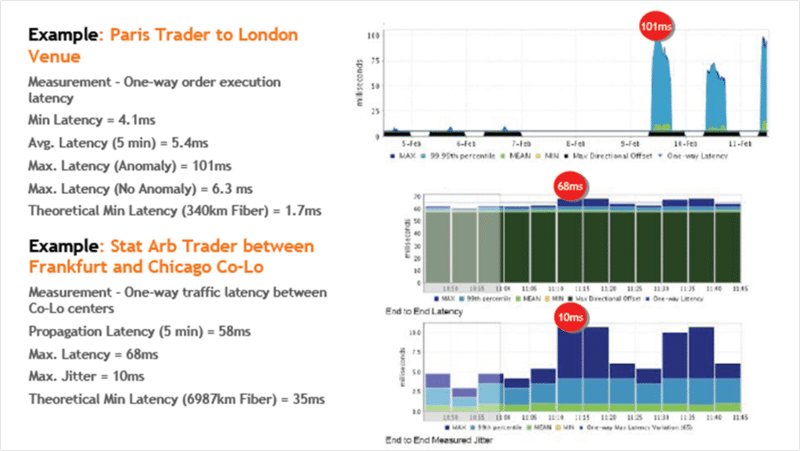
Like most good conferences, the Deutsche Bourse Open Day had sponsors.
These sponsors are generally partners with the exchange however, working with them to deliver technology solutions.
The four highlighted partners were Colt, Corvil, Equinix and Orc.
Each of them had a moment in the spotlight as sponsor, to present their solution and talk about what they were up to, so I sat in that stream through the day to get a feel of the latest and greatest in trading technologies.
And it was interesting.
As mentioned already, the main topic was speed. The speed of connectivity via proximity hosting solutions and co-location. Colt focused upon the former (see blog a couple of days ago for their pitch) and Equinix on the latter, and both were detailing how this improves a broker’s speeds and feeds.
In Colt’s case, we are looking at speeds of sub-400 milliseconds for a round the world trip for a trade instruction. In Equinix’s, the focal point is having everything sitting in one data centre for high speed connectivity.
They enthral the listener with stories of Chicago to Frankfurt communications in 50 milliseconds, or data centres that offer 1.2 million square feet of server capability. The latter came from Equinix who apparently have 43 data centres in 10 countries, with 1.2 million square feet of server capacity in the USA.
1.2 million square feet of co-location space.
1.2 million square feet.
That's over 20 football fields worth of compute power.
And that's just in the US of A, as they boast a further 10 football fields worth (600,000 square feet) in Asia and Europe.
That’s racks upon racks upon grids upon grids upon boards upon motherboards of compute capacity.

Just unbelievable.
It’s also where I get this idea of a future being one where all the exchanges, market makers and broker-dealers of the world just co-locate themselves in a few massive data centres around the world connected by low latency dark fibre.
Just unbelievable.
Meanwhile Corvil talked about the idea of low latency being all well and good but, when you have hand-offs between the trader, the exchange and the price feeds, it all falls apart.
Their game is all about managing latency between the links and put up a nice little formula of how to calculate latency:
Latency = PD + SD + QD
- PD being the Propagation Delay of speeds and feeds and distance;
- SD being the Serialisation Delay of message sizes and bandwidth; and
- QD being the Queuing Delay of message arrivals and scheduling
All and each of these factors has an impact, and even with co-location and proximity hosting, you still get delays in the system between each point end-to-end.
I particularly liked this picture of real-life trading environments (double click to enlarge):

which shows how 1 microsecond can make such a difference.
In a microsecond you can make or break a trade execution.
In a microsecond you can win the arbitrage game or lose it.
In a microsecond, you can get the spread, buck the market and secure the deal.
And in the time it’s taken you to read this, about 100 million deals have been secured.
Blink and you’ll miss them.
Oh yes, why write about some of the firms out there supplying the markets?
Because I found it interesting that Deutsche Bourse had selected these firms as partners and sponsors.
I wonder who the other exchanges would put on stage?
The Finanser is sponsored by VocaLink and Cisco:

For details of sponsorship email us
Chris M Skinner
Chris Skinner is best known as an independent commentator on the financial markets through his blog, TheFinanser.com, as author of the bestselling book Digital Bank, and Chair of the European networking forum the Financial Services Club. He has been voted one of the most influential people in banking by The Financial Brand (as well as one of the best blogs), a FinTech Titan (Next Bank), one of the Fintech Leaders you need to follow (City AM, Deluxe and Jax Finance), as well as one of the Top 40 most influential people in financial technology by the Wall Street Journal's Financial News. To learn more click here...

